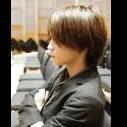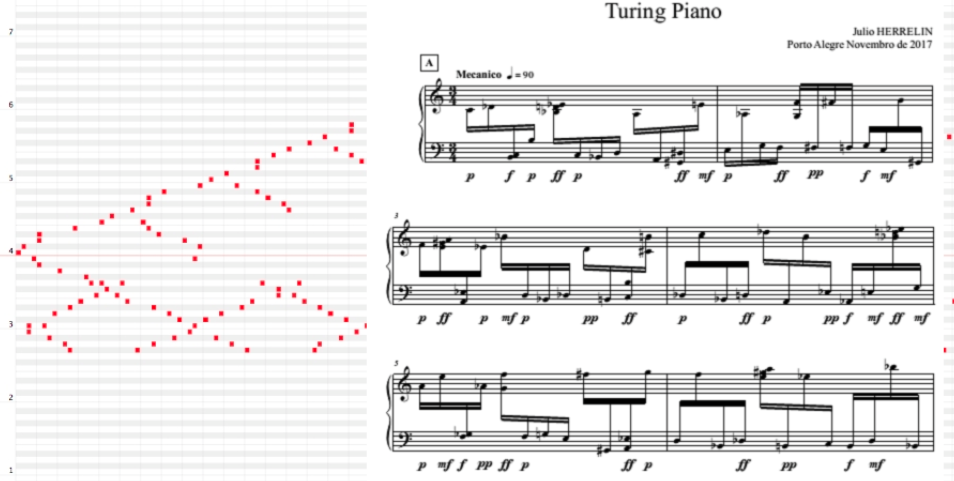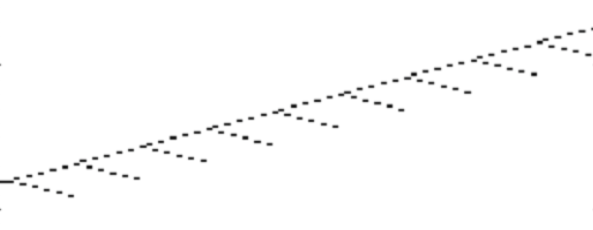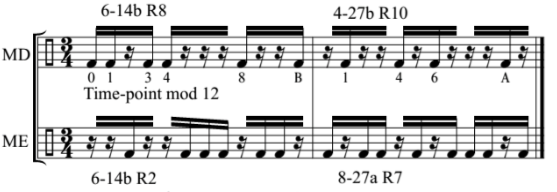Search the Community
Showing results for tags 'video'.
-
A.S. Mailbox (three serial miniatures for string quartet) dur: circa 4´30 Composer: Julio HERRLEIN Porto Alegre - Jun/2021 I. Email from Anton II. [SPAM] Re: Hauer III. Letter from Alban A.S. (Arnold Schoenberg) Mailbox are a set of three miniatures for string quartet using 12-tone serial techniques and parametric composition processes. The idea is a imaginary mailbox of Schoenberg dialogues with his main disciples Webern and Berg, and also Hauer, his rival in the creation of a 12-tone composition method. All the pieces are (loosely) based in the same all interval 12-tone row: c4 eb4 a4 db4 b4 ab4 g4 d4 e4 f4 bb4 gb4 PERFORMANCE NOTE: The score and parts accidentals favor the FLATS (b) for easier enharmonic reading. Some of the uses of the tone row are also related to the rhythmic span of the orchestration and the algorithmic method for spreading the tones through the lisp lists in the Opusmodus software. The first miniature “Email from Anton” are inspired by the pointilistic textures used by Webern in his op. 28. In a later section, the textures are intensified by melodic figures and tremolos across the instruments of the quartet. The second miniature “[SPAM] Re: Hauer” is an imaginary email from Hauer (lost in “Arnie´s” spam box…) where he shows to A.S. his klangreihen method (as actually described by Dominik SEDIVÝ, 2011, pp. 25-30) to harmonize and make a smooth parsimonious voice-leading of a 12-tone row. The last piece “Letter from Alban” set up some 6-attack melodic motifs based on the hexachords of the basic row, combined with rhythmic ostinato textures of accompaniment and sweet chords derived from retrograde version of the row. All the best !! Thanks to everyone in this forum who have patience with me ! Julio Herrlein, 2021/JUNE
-
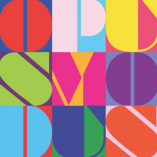
video VIDEO: How to Tutorial - Working with Samples in Opusmodus
opmo posted a topic in Announcements
-
i like the concept of "brownian bridge" to produce complex curves from a to b, but not completely randomized or controlled. in the video you see all the generations for one evaluation... how it could sound - mapped on different tonalities Brownsche Brücke – Wikipedia DE.WIKIPEDIA.ORG for understanding in OPMO: axiom: start end (50 23) gen1 => 1 step (50 8 23) gen2 => 3 steps (50 15 8 -3 23) gen3 => 7 steps (50 40 15 13 8 -14 -3 29 23) gen4 => 15 steps (50 58 40 33 15 22 13 4 8 4 -14 -16 -3 17 29 17 23) ...and so on ------------------------------------------------------------------------------- some evaluations with same AXIOM: Bildschirmaufnahme 2023-07-08 um 11.09.51.mov ;;;;;;;;;;;;;;;;;;;;;;;;;;;;;;;;;;;;;;;;;;;;;;;;;;;;;;;;;;;;;;;;;;;;;;;;;;;;;;;;;;;;;;;;;;;;;;;;;;;;;;;;;;;;;;;; ;;; BROWNIAN BRIDGE -> could be use as a rnd-process from A to B (integers or pitches) ;;; if you have a look to example with ":all-gen t", you will see the process with all generations, how it works ;;; or take a look to: ;;; https://de.wikipedia.org/wiki/Wiener-Prozess#/media/File:BrownscheBewegung.png ;;; https://de.wikipedia.org/wiki/Brownsche_Brücke ;;;;;;;;;;;;;;;;;;;;;;;;;;;;;;;;;;;;;;;;;;;;;;;;;;;;;;;;;;;;;;;;;;;;;;;;;;;;;;;;;;;;;;;;;;;;;;;;;;;;;;;;;;;;;;;; ;;; SUB (defun pick (a b &key (span 5)) (let ((rnd1 (car (rnd-number 1 (+ a span) (- a span)))) (rnd2 (car (rnd-number 1 (+ b span) (- b span)))) (n)) (progn (setf n (car (rnd-number 1 rnd1 rnd2))) (if (or (= n a) (= n b)) (+ (rnd-pick '(1 -1)) n) n)))) (pick 2 3) ;;; MAIN ;;; MAIN (defun gen-brownian-bridge (n startend &key (all-gen nil) (output 'integer) (span 5)) (let ((seq)) (progn (setf seq (append (list startend) (loop repeat n with liste = startend do (setf liste (filter-repeat 1 (loop repeat (1- (length liste)) for cnt = 0 then (incf cnt) append (append (list (nth cnt liste) (pick (nth cnt liste) (nth (1+ cnt) liste) :span span) (nth (1+ cnt) liste)))))) collect liste))) (setf seq (if (equal all-gen t) seq (car (last seq)))) (if (equal output 'pitch) (integer-to-pitch seq) seq)))) ;;; EXAMPLES ;; SPAN influence -> span 2 (loop repeat 20 do (list-plot (gen-brownian-bridge 5 '(1.2 5.4) :span 2 :all-gen t) :zero-based t :point-radius 3 :join-points t) do (sleep 2)) ;; SPAN influence -> span 10 (list-plot (gen-brownian-bridge 5 '(50 23) :span 20 :all-gen t) :zero-based t :point-radius 3 :join-points t) ;;; SPAN default (5) (list-plot (gen-brownian-bridge 5 '(50 23) :all-gen t) :zero-based t :point-radius 3 :join-points t) (list-plot (gen-brownian-bridge 5 '(50 23)) :zero-based t :point-radius 3 :join-points t) (gen-brownian-bridge 5 '(50 23) :all-gen t :output 'pitch) (gen-brownian-bridge 5 '(50 23) :output 'pitch)
-
-
Dear Friends ! This is the performance of the piece A.S. Mailbox at the Musmat Congress ! This piece was all done in Opusmodus (with some post editing in Musescore). Happy to share this with you ! I have one more thing this week... There are many great pieces in the concert ! (and also a Schoenberg Quartet) ! Enjoy
-
Hi folks, Here's a work in progress made with the fantastic COUNTERPOINT function. S.
-
-
Hi, here's the video rendering of my score "Voile Suspendu" S.
-
Hi, here's a new score made with Opusmodus and Sibelius. SB.
-
WHY I USE OPUSMODUS SOFTWARE IN MY MUSICAL COMPOSITION PROCESS In this video I will describe some of the techniques I used in my compositional process and why I decided to use OPUSMODUS Software for compose music ! Also my experience with Pure Data and Nodal Software before moving to Opusmodus.
-
testing videoplayer in OPMO.mov whitenoise.mov
-
- testing
- videoplayer
-
(and 2 more)
Tagged with:
-
Hi people, Though I've been using Opusmodus for about 2 years now, and in great love with it, I haven't really had a chance to share my work on the community. But here I have my piano piece vastly written with Opusmodus, and guess what, it's got a cool video, too! Yamaha corporation kindly offered me to use their automated piano for filming, and I think an algorithmic music like this goes very well with it! Yuichi
-
Dear Friends, I'd like to share a composition all made in Opusmodus. The composition is part of the Portfolio of my Doctoral Dissertation. I'd like to thank you so much, Opusmodus and the support of you here in this forum was amazing !! Love you all !! TURING PIANO (Julio Herrlein) Here is the commented code for the First Section: ;;;PART A ;PITCHES – The pitch structure are based on "chevron-like" patterns. This can be related to some Xenakis ideas: the arborescences, the music as a plot idea. (setf patpit (integer-to-pitch (gen-integer-step 0 68 '(1 -2 3 -4 5 -6 7 -8 9 -10 11)))) (setf patpit2 (integer-to-pitch (gen-integer-step 0 68 '(11 -10 9 -8 7 -6 5 -4 3 -2 1)))) ;;; This interval pattern leads to an infinite ascending movement, like the picture below: ;;; After that, I decided to restrict the ambitus of the pattern, otherwise it goes ascending forever. I did the restriction thinking in the hands of the pianist, in a way to not collide or crossing the hands. ;;;After the ambitus restriction, the next step was find some partitions to make some chords for the piece, so each hand have a diferent partition of the chevron-like pattern, like below (setf pitpartition (ambitus '(g3 c6)(chordize-list (gen-divide '(1 1 1 3 1 1 1 2) patpit)))) (setf pitpartition2 (ambitus '(g1 g3)(chordize-list (gen-divide '(2 1 1 1 1 2 1 1 1 1 1 1 1 1) patpit2)))) ;;; Next, i decided on the Rhythms to use. The rhythms are complementary, i.e., each hand plays on the silence of the other, using the following pattern: DIGRESSION: The FORTE NUMBERS are part of my dissertation that makes the conversion of the entire Forte sets onto Rhythms modulo 12. The dissertation (in portuguese) can be downloaded HERE: Das alturas ao ritmo : teoria dos conjuntos rítmicos como ferramenta composicional From pitches to rhythm: rhythmic set theory as a compositional tool. http://hdl.handle.net/10183/179457 Abstract This doctoral dissertation is divided into two parts: the first deals a rhythmic set theory, and the second contains the portfolio of compositions developed during this period of studies. This dissertation presents a system of rhythmic organization parallel to the musical set theory pitch class organization FORTE (1973), as well as an adaptation of the time-point-system (BABBITT, 1962). From the standpoint of the traditional set theory, and also from the diatonic set theory, this unified approach allows to estabilish a connecting tissue of basic aspects: from the harmony and chords symbols to the rhythmic organization. At one time, in a complete catalog, the families of pitch class sets and chord symbols are related to their respective rhythmic counterparts. The musical motivation for this research came from my interest in the swinging and groovy repetitive rhythms called timelines (TOUSSAINT, 2013), commonly used in popular music. These dancing timelines have properties similar to those of the diatonic sets, and for this reason, this dissertation presents some properties of the diatonic pitch class sets, drawing a parallel with their rhythmic counterparts. These relationships also appear in the portfolio of compositions, characterizing some procedures used. The portfolio of compositions, which includes a composition for symphony orchestra, is presented form the standpoint of a duality between transparency and opacity. This duality address the essential differences in the audibility of the results from various composition techniques. This study of Rhythmic Set Theory will serve as an analytical approach of my compositional output in popular music, with a systematic way to understant and to extrapolate some aspects already used in my practice as composer and improviser. Here is the rhythm used in Turing Piano (with Forte numbers and rotations) (setf ritmo1 (gen-repeat 10 '(s s -s s s -s -s -s s -s -s s -s s -s -s s -s s -s -s -s s -s))) (setf ritmo1b (length-invert ritmo1 :omn t)) ; DINAMICS: Following the parametric stuff, I decided to set the dynamics, according to the harmonic density, i.e. the more notes, the more louder. (setf din1 (span pitpartition '(p p p ff p mf pp ff))) (setf din2 (span pitpartition2 '(f p p p p ff p p ff pp pp f mf mf))) ;ASSEMBLING of the materials (setf lhmat1 (make-omn :length ritmo1 :pitch (pitch-transpose 4 pitpartition) :velocity din1)) (setf rhmat1 (make-omn :length ritmo1b :pitch (pitch-transpose 4 pitpartition2) :velocity din2)) ;MONTAGE of music blocks (assemblage) (setf pianoassemblerh (assemble-seq lhmat1)) (setf pianoassemblelh (assemble-seq rhmat1)) ;;;SCORE- Layout (def-score Miniatura-pno1 (:key-signature 'atonal :time-signature '(3 4) :tempo 85 :octave-shift '(c2 c6) :layout (grand-layout 'pno :all-accidentals 'all)) (pno :omn (merge-voices lhmat1 rhmat1) :channel 1 :sound 'gm :program 0) ) COMPLETE VIDEO
-
Hello, This is my participation at Pianoteq Video Contest 2017. The composition was written with Opusmodus and played in Ableton Live with seven instances of Pianoteq (modified TubularBells, modified ConcertArp recording, Steinway D Classical Recording A, modified Celesta, modified Cinbalom, modified original ChurchBells, Steinway D Classical Recording BA and completed with a Ircam Solo Instruments bank instance (flute, Horn, Cello) read via the UVI Workstation : and the list of videos in competition : http://www.forum-pianoteq.com/viewtopic.php?id=5301 Do not hesitate to tell me what you think. Didier PS : It is advisable to play the video in 1080p HD and listen to the headphone for panoramic movements.
- 4 replies
-
- ircam solo instruments
- opusmodus
-
(and 1 more)
Tagged with:





